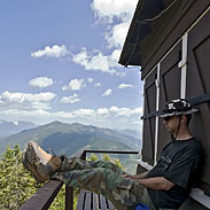Landscape Architecture for Landscape Architects › Forums › PROFESSIONAL PRACTICE › Cloud Storage: The New Frontier?
- This topic has 1 reply, 5 voices, and was last updated 13 years, 8 months ago by
 Chris Whitted.
Chris Whitted.
-
AuthorPosts
-
March 20, 2012 at 7:22 pm #158349
Anonymous
InactiveFlashback a few years ago when we first started talking about backing up on DVDs. I was expected to backup weekly. I’ve barely backed up yearly since.
Our firm is small and we use a network-link to run two redundant external drives as our “server”. This is less than optimal, and I’ve been forced to save files locally on my computer. Otherwise I’m waiting two minutes for a file to open or save.
What happens if our office burns down, the server and all our archives go down with it, since we have no offsite or remote backup (last time I checked, services like Carbonite do not backup external drives)
Does anyone have an opinion on cloud storage and backup? I installed a Live Drive today for a two-week trial, but other than what I’ve read and about an hour on first-hand experience, I haven’t had much insight on this issue. Plus my boss asks questions like:
“How do we locally backup the cloud?”
“How will it work with DWG files and Xrefs?”
“What if the internet is down?”
“What if the cloud crashes?”
I’ll eventually get to some of these answers, but I wanted to poll the forum’s experience.
Thanks,
RP
March 20, 2012 at 9:33 pm #158355 Chris WhittedParticipant
Chris WhittedParticipantFirst off, in terms of backups I’ll just say that cloud storage is simply another medium no different than external drives, magnetic tapes, or DVDs. They all have their own pros and cons. You’ve sort of answered your own first question – with no off-site backup if your office burns down you lose everything, permanently. And for the record, according to the Carbonite website I just looked at they do back up external drives with some of their plans. I can’t speak to any other such services as I’ve never used or looked into them.
The questions you posed:
You locally back up the cloud the same way you’d locally back up your data without the cloud – another method.
Not sure what you mean by working with dwgs and xrefs. A backup is just that – a copy of files. It shouldn’t change, affect, or ‘work with’ anything. Any backup method should preserve file structure if you’re talking about the pathing of xrefs, and software that only backs up certain file types should let you specify custom extensions if they’re not already included.
If the internet is down, you have no access to your backups nor can you back anything else up.
If the cloud crashes, at best you’re again without access to your backup or the ability to make new ones for some period of time. At worst, you’ve permanently lost data (not that this isn’t true of any other backup method as well). It depends on how long the service is down and how good THEIR backups are.
Other things and questions to consider:
How much data are we talking about transferring and how often? How does that relate to your internet connection speed. A few sub-1MB files a day probably aren’t a big deal. Even a couple of 100+MB Photoshop renderings, not to mention your initial backup (assuming whatever you use is smart enough to do incremental backups), are going to seriously hammer your connection capacity. Even with a relatively fast upload speed it would take hours to upload a single DVD’s worth of data and it would slow down any other internet activity. How much bandwidth do you have and need (that’s transfer capacity, not storage capacity)?
How secure is your data or does it need to be?
Have you reviewed the TOS for whatever service? Seen the fine print they’re not liable for damages or lost data?
What is driving your decision? Cost? Time? Reliability? Ease of use?
A few other notes/observations:
You’re right, using external drives as a ‘server’ is far less than optimal. I’m not sure if you mean a couple of drives hanging off computers that are simply shared out or a NAS box, but external drives really aren’t meant for working off of – more for storage and transport. Even with a dedicated server, working on CAD files and word documents and such is one thing, but for a large file like a Photoshop rendering I’d still copy it locally to work on and then copy back when I was done. Also, DVDs aren’t really a good choice for backups so much as archiving. The capacity is too low and the method too slow/user intensive to be efficient. External drives or magnetic tape are a much better way to go.
March 20, 2012 at 10:35 pm #158354Anonymous
InactiveAll good points, thanks.
Intra-office discussion are already pointing us in different directions since this post. Upgrade the local server (off of externals) and into a real server, or at least a capable computer. Then do offsite backups and skip all the “in the cloud” stuff – which seems better suited for casual editing or collaborating, not daily cad work.
The CAD issue I mentioned was related to working the cloud, not locally and backing up to the cloud. I originally imagined keeping all those project files off my computer and only pulling them out of the cloud as needed… but Autocad wants a local version of everything, unlike a word doc. Wasn’t sure if that was possible, and it probably isn’t, since there isn’t a cloud autocad. I haven’t found a good way to sync local files with other networked files (or cloud files) without duplication.
But – like I said before, upgrading the local server is probably an important first step.
March 20, 2012 at 11:40 pm #158353 mauiBobParticipant
mauiBobParticipantWhat if someone steals your information from the cloud? How do you file a police report? Cloud may be the new frontier, but they need to work out the kinks before mass movement to use it.
March 21, 2012 at 12:56 am #158352 Wyatt Thompson, PLAParticipant
Wyatt Thompson, PLAParticipantWasn’t sure if that was possible, and it probably isn’t, since there isn’t a cloud autocad.
Autodesk Cloud: https://documents.cloud.autodesk.com/Landing/Index I’ve not used it, but it might be worth checking out.
March 21, 2012 at 8:18 pm #158351 Chris WhittedParticipant
Chris WhittedParticipantAh, you were looking at using the cloud storage as primary, not just a backup.
Yes, improving your server situation would be most beneficial from what you describe. Consolidating data files to a single location makes backups significantly easier, as well as the convenience and time factors of everyone knowing where to look for something and having access to it. And keeping down the number of file versions.
As for syncing files, there are two areas to look at. The first is specifically backup software, and programs designed for that purpose have a number of features to control how and what they back up. Everything or only changed files, how many versions to keep, how to access and restore files, scheduling, integrity monitoring, etc. Unfortunately most of the really good programs that are robust enough even for the kinds of backups a small office would be doing are not exactly cheap.
The second area is just synchronizing files between locations as you describe. They don’t have to be backups per se, but both activities share the same functions/features. I would suggest you take a look at a program called SyncBack. It’s extremely customizable, so you can create rules for whatever situation you need (ie, only copy the file if it’s changed or not present, whether or not to overwrite an existing file or keep x number of versions, etc.).
March 21, 2012 at 9:55 pm #158350 Jason T. RadiceParticipant
Jason T. RadiceParticipantOr you can get a NAS (network attached storage) which is a bunch cheaper than a full-blown server. Its really just a box with disk drives and a network card in it. You can even convert an old PC that is outdated for day to day work, plus the drives are relatively cheap. There is free software available to turn it into a NAS. This is for local backup and immediate storage only. As far as CAD is concerned, if you are not sharing the files, then local will work. If not, a full-blown server is the only and fast way to go if you are using x-refs. Plus, you can hook up all of your networked printers and stuff to it.
X-refs need consistency in their path (their place on your computer) to operate properly without needing to remap the path. To preserve the path, it is crucial you keep a rigid folder structure. Namely, keep all the files in one master (top-level) folder, such is one folder per project. You can keep them in different subfolders within the top-level folder, but it is crucial to keep the file structure when you archive and backup the file. You are backing up the main project folder. AutoCAD has become more adaptive with x-refs, and will adjust the path if you have a different drive name/letter, provided you are accessing it from the same folder structure. Such as:
C:current projects/2012-135 Demo Project
-current drawings
-archive drawings
-consultants
-images
-plots
-xrefs
Keep off the cloud…it sucks, its insecure, it can be painfully slow (try google docs sometime) and it is unreliable to depend on for a business.
-
AuthorPosts
- You must be logged in to reply to this topic.


